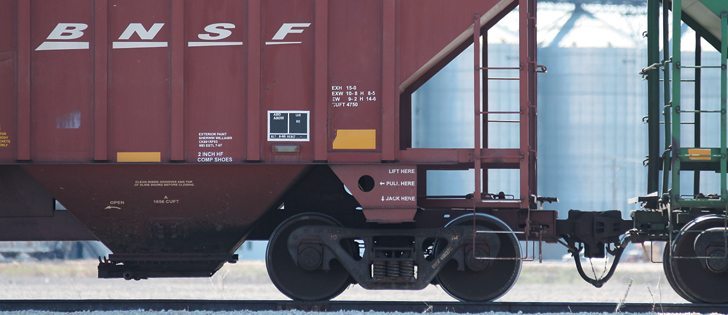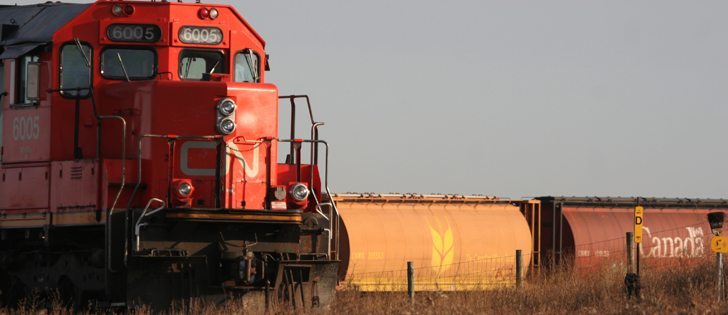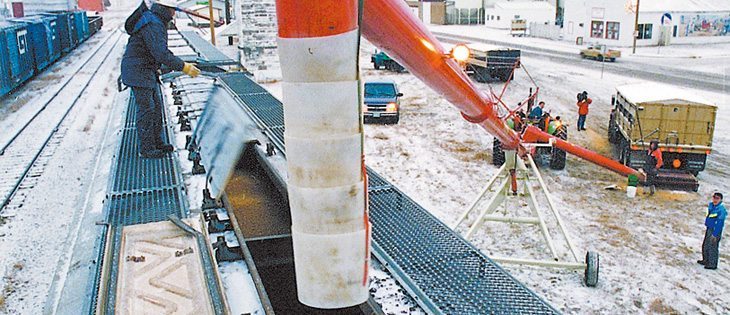An American railway is increasing capital spending by 25 percent to keep up with growing demands from an expanding commodity sector.
Canadian railways are also spending more to keep up with expanding production of petroleum, grain and other commodities in Western Canada, but the increases are more modest.
BNSF Railway captured attention this month, announcing a $1 billion investment in its northern railway network, including $400 million in North Dakota, $160 million in Montana and $120 million in Minnesota.
BNSF president Carl Ice said the money is part of the largest capital investment in the company’s history. The railway plans to spend $5 billion this year to expand and update its operations. That is up 25 percent from $4 billion the year before.
Read Also

Stacking Canada up on gene editing livestock
Canada may want to gauge how Argentina and other countries have approached gene editing in livestock and what that has meant for local innovation.
“Our capital investments along the northern corridor are critical to expanding our capacity to support the region’s rapidly growing economy, improving our ability to meet our customers’ expectations and ensuring our railroad remains the safest mode of ground transportation for freight,” Ice said.
Mark Hallman, a Canadian National Railway spokesperson, said CN expects “continued strong freight volume growth in Western Canada, including grain and other commodities,” which prompted it to invest in a number of projects last year:
- $70 million for increased capacity for the CN main line between Edmonton and Winnipeg, including extended sidings, sections of double track and yard track extensions in Winnipeg, Saskatoon and Wainwright, Alta.
- $30 million in improvements to the CN Prairie North Line, which runs parallel to the company’s main corridor between Edmonton and Winnipeg. CN invested in new sidings, new ties and track and track surfacing.
The company plans to spend $90 million this year on the Edmonton-Winnipeg main line, including $60 million on additional double track segments and $30 million for new rail.
Hallman said CN is investing $2.25 billion in capital programs for its North American network this year, up 12.5 percent from about $2 billion the year before.
The money will be spent on track infrastructure, 60 new high-horsepower locomotives and on facilities such as distribution centres.
Ed Greenberg, a spokesperson for Canadian Pacific Railway, said the company will invest $1.2 to $1.4 billion in its rail network this year. It spent about $1.2 billion last year.
Greenberg didn’t provide a breakdown of expenditures but said the railway invested $250 million in 2011-2013 for track enhancements on CP’s North Main Line through Manitoba, Saskatchewan and Alberta.
“In addition to adding capacity, it better complements our South Main line that goes across Western Canada,” Greenberg said.
CP released a statement by chief executive officer Hunter Harrison in May that addressed the grain shipment backlog in Western Canada this winter. Harrison said last year’s crop was nearly 80 million tonnes, 37 percent higher than the five-year average.
“Canada’s grain handling system is just not built to handle this record amount of grain, and CP is moving all the grain the supply chain can currently handle,” he said.
“This is a capacity problem, and the Canadian supply chain needs to be searching for a capacity solution.”
Greenberg said everyone has to work together, “which requires a 24/7 commitment similar to the railways.”
“Our railway has continued to make improvements to network co-ordination and provided customers longer grain trains, where possible,” he said.
“CP is moving grain in all available lanes, but we need to move grain to fluid outlets with strong cycle times to move as much grain as possible as quickly and as efficiently as possible.”
















